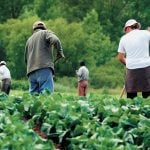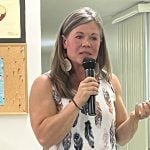It’s been more than a century since herds of bison roamed the Prairies and high plains of North America. But if some biologists have their way, the sight of bison herds on the landscape could be a reality in the next 20 years.But first more land must be made available for herds to roam free, government policies must be updated and the public must change its attitude toward bison, according to a recent study on the species co-authored by University of Calgary experts.The report, American Bison: Status Survey and Conservation Guidelines 2010, was the result of three years’ work. Released by the International Union for Conservation of Nature, it sets out the status of American bison and offers recommendations on ensuring the species’ conservation for the future.The publication provides guidance for the Canadian Rockies Bison Initiative, which proposes to restore bison to the eastern slopes of Banff National Park.“The guidelines will have great application to local projects looking at ecological restoration of wild bison in the mountain areas west of Calgary,” said Cormack Gates of the University of Calgary’s faculty of environmental design.He is co-editor of the report and co-chair of the IUCN/SSC Bison Specialist Group.Centuries ago, tens of millions of bison roamed the plains and mountain valleys from Alaska to Mexico.Today, there are 400,000 bison in commercial herds but only 20,500 Plains bison in 61 conservation herds and 11,000 Wood bison in 11 conservation herds.Little progress has been made in recent decades to increase the population in conservation herds, which are managed for their genetic diversity and ecological roles.Gates said there are challenges in restoring bison as free ranging animals.“In the grasslands, agriculture and private holdings represent the largest constraint and in the boreal forest, the largest constraint is habitat.”Bison have the best chance for a recovery if they roam freely across hundreds of thousands or even millions of acres. Gates said the American Prairie Foundation in Montana is doing a good job obtaining land for its bison project“APF owns and/or leases 121,000 acres of deeded and public land,” explained Alison Fox, partnership and marketing manager for the foundation.The ranches APF has purchased have historically held grazing privileges on 63,000 acres in the Charles M. Russell National Wildlife Refuge.APF manages more than 200 free ranging bison.“When we first brought bison into this part of Montana, there was some concern from our neighbours about management and disease issues,” said Fox. “Our source bison are all tested to Montana Department of Livestock specifications and are certified to be disease free.”Grassland can benefit from the bison’s grazing and behavioural habits.“The ecological role of bison is different from cattle,” explained Gates. “This is a highly mobile animal. They may graze off an area, then move immediately and they won’t be back for many weeks or months or even years. In intense, short-duration grazing, there is a feedback of nutrients to the soil.“Bison don’t camp in riparian areas and they engage in wallowing. In spring, these wallows, or pits, fill with water and stimulate the growth of flowering plants around the edges.… Through biofeedback, bison provide an ecological service.”
Read Also

Alberta may eliminate marked fuel
Alberta may soon stop selling dyed gasoline and diesel.














